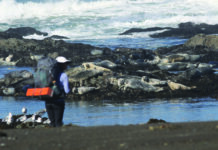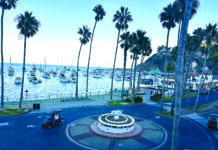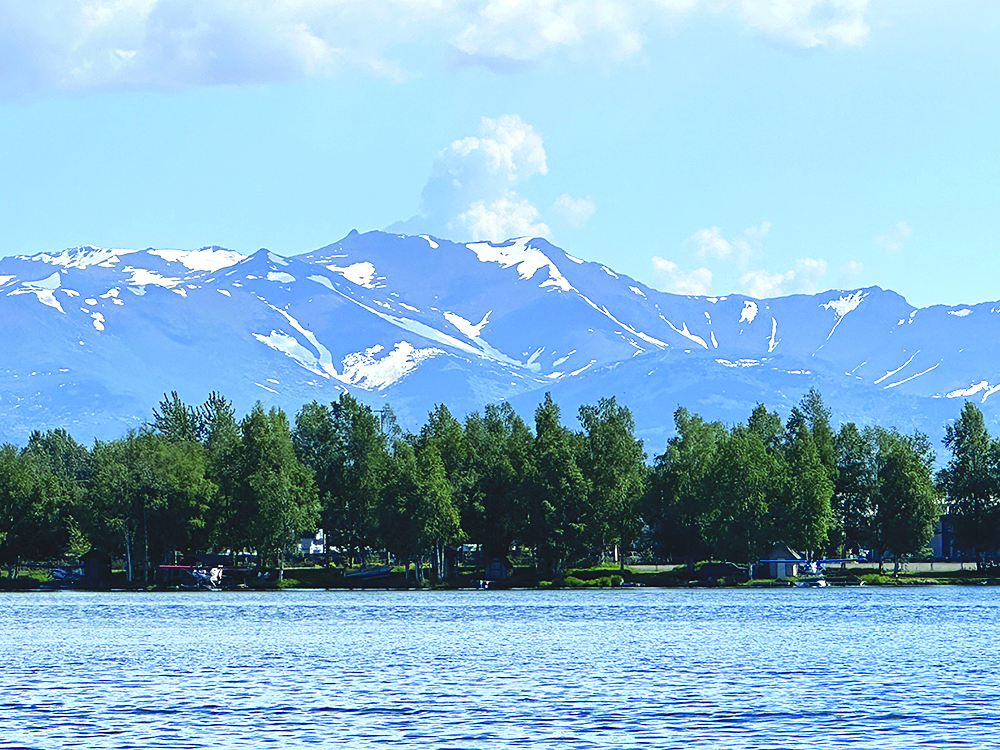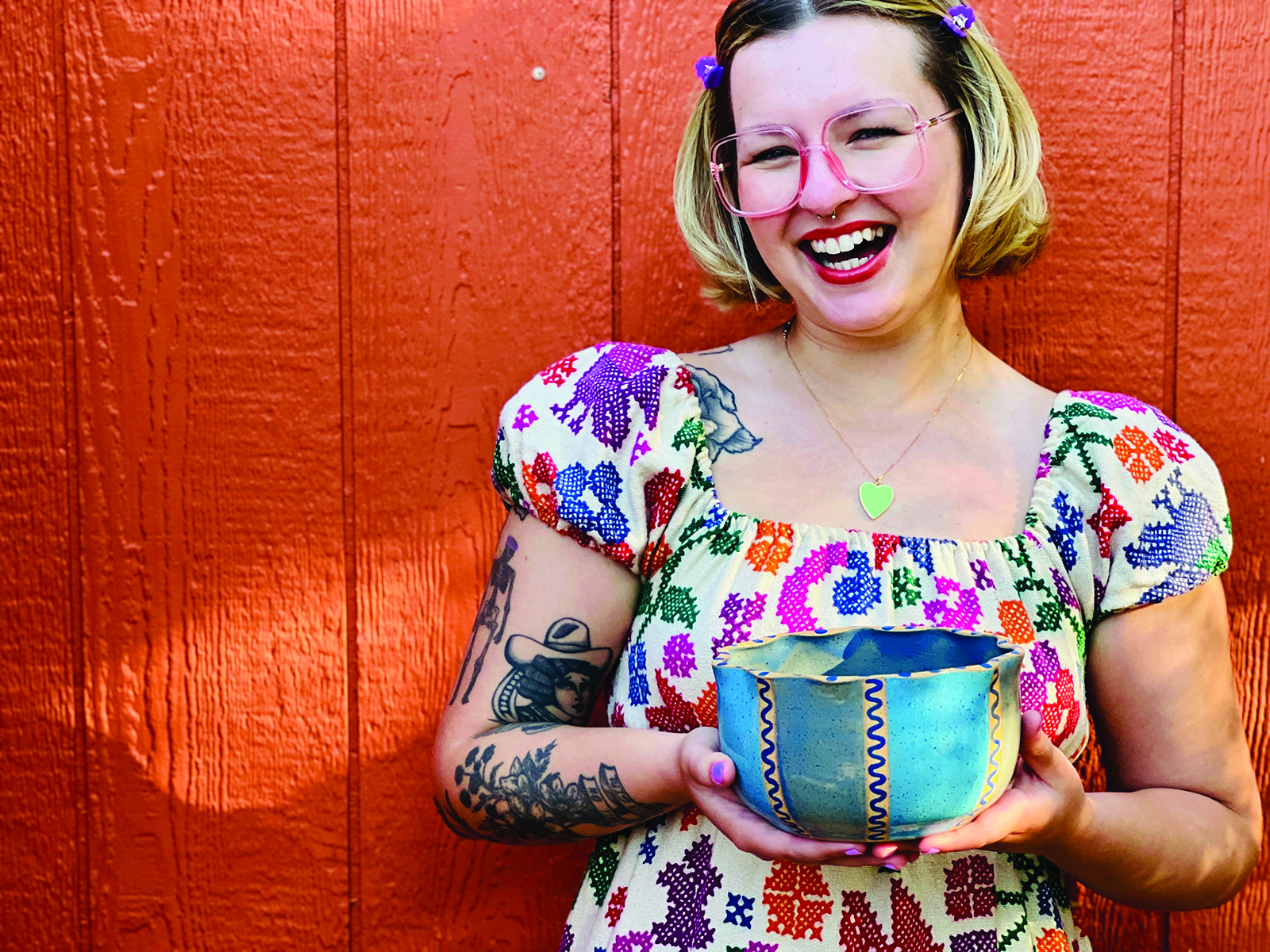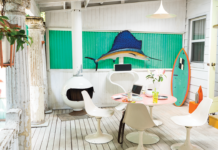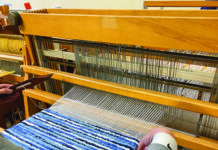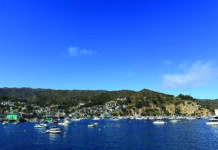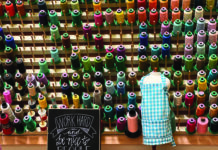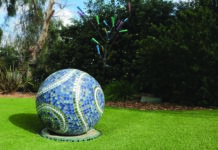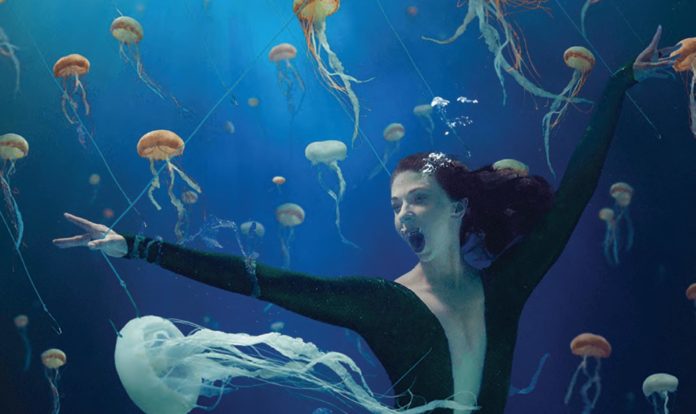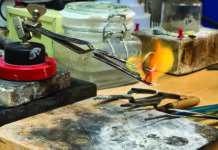By Emily Dodi.
One of Christine Ren’s first memories is of being a little girl at the community pool in rural Pennsylvania where she grew up. She hadn’t yet learned how to swim but, as Ren recalls, “I would just pace and pace along the pool and watch the older kids swim. I’m a very visual learner.” Before anyone knew it, she adds, “It was like, ‘Oh, my God, she’s in the water!’ ”
Instead of tragedy, a trajectory was begun.
“My mom always said I swam before I could walk,” Ren says. “She couldn’t get me out of the water.”
Over the years, she’s gone from her local pool to far-off oceans to the shores of Ventura — her adopted home.
“I love Ventura,” Ren says.
Living close to the ocean is key. She finds that “the ocean is recharging.” That is a good thing for a very busy person. Ren’s life has taken her from being a professional dancer to earning a degree in marine affairs and policy from the University of Miami’s Rosenstiel School of Marine and Atmospheric Science to working on the PBS series Changing Seas to creating powerful narrative underwater images and films. As stated on her website, www.theunderwaterwoman.com, Ren’s “skill sets and work history [are] an eclectic mix of marine science, professional dance and entrepreneurship but that, at her core, she is an artist and passionate visual storyteller.”
“My dream,” Ren says, “is to bring together movement, film and ocean science.”
To that end — or rather, to a new beginning — Ren is in the early stages of creating Imaginesque, the “world’s first underwater performance and production company.” It is a “first-of-its-kind production company, built on female-driven imagination.” The company builds upon Ren’s existing underwater narrative style but moves from photo and into film — specifically to exactingly choreographed underwater dance performances for camera. Like with all promising start-ups, Ren is looking for investors and she has reason to be optimistic. Everything that comes to pass in her life and career seems to have a certain inevitable, beautiful flow to it.
“My life works in mysterious ways, like a snow globe,” she says, adding that one minute she can say, “Oh, look, how nice and quiet and then: shake, shake, shake.”
One thing that has always held firm in Ren’s life is her love of the water. Throughout her career she has translated that passion into purpose. Known professionally as The Underwater Woman, Ren has produced a stunning portfolio of images and films depicting herself and/or other performers in sublime, impactful movement underwater. She calls it “Imagery that drives action.” Her elegantly choreographed works, shot by renowned photographers, meld fantasy and stark reality. They exalt the beauty of the ocean and the human form contrasted against the ugliness of pollution and other threats to the environment. Her videos of underwater performances are often accompanied by a message about the dangers that plastics, “ghost nets” and other hazards pose to the ocean. There is something extremely refreshing about Ren that allows her to deliver dire scientific facts with a touch of optimism — a belief that humans really can get our act together in time.
Ren began capturing choreographed underwater movement with a GoPro camera in swimming pools in Florida. She learned that the work wasn’t easy, but she loved it. She also realized that it required a skillful team; it takes a lot of hands to get the “highly styled” look she seeks. It didn’t phase her — or change her vision. She continued to think up new ideas.
“I’m always sketching,” Ren says, “I have very persistent, wake-you-up-in-the-middle-of-the-night images. I carried a sketchbook around for about eight years until I saw Brett Stanley’s work.” That’s when everything really clicked. She reached out to Stanley and they met in San Francisco. She showed him some of her sketches. Before long, they were collaborating.
One of their most popular collaborations is Blind Spots, which features Ren underwater pushing a shopping cart that is literally overflowing with plastic garbage: bags, bottles, cups, packaging, the gamut. Ren is blindfolded with a “scarf” fashioned from a black garbage bag. Another one of Ren’s and Stanley’s collaborations is a series entitled Jellyfish Soup. The photographs depict a dire consequence of ocean pollution and over-fishing, which is to say: There won’t be anything left alive in the ocean but jellyfish. (Not that there’s anything wrong with jellyfish.)
These images, like all of Ren’s work, are as meaningful as they are stunning. Calling attention to the plight of the world’s oceans is vitally important to her.
“I see so many people walking around thinking they are a separate entity from other people and the world.” Ren’s guiding principle is this: “How do I embody the love I feel for the ocean?” Her hope is that she can help people “feel connected to the environment” because she believes that it is only when people feel “fundamentally connected” that any meaningful change is possible.
This is what she strives to achieve through her work. Her portfolio is filled with photographs and videos that entice the viewer with images filled with natural beauty and sensuous curves and angles. But look beneath the surface (pardon the pun) and there is a deeper message.
Take the series entitled Silent Killers, photographed by Jose G. Cano. In the photographs and captured in the accompanying video, Ren swirls in an ominous pas de deux with a fishing net. Protect What’s Precious, shot by Brett Stanley, depicts Ren as a righteous defender of the coral reef against a trawl net. Resurrection Science, photographed by Chiara Salomoni, shows Ren in a lab coat studying a rejuvenated piece of coral. (A playful nod to her marine science background, perhaps?) In a selection of works photographed by Justin Lutsky, including Balancing Act, Leap of Faith and others, Ren’s artful movement takes prominence over activist symbolism and yet the message of loving the ocean carries through loud and clear.
To date, Ren’s work has been viewed hundreds of thousands of times online and has been featured on Nat Geo, KQED and other outlets. She’s also helped people make a change in their own lives.
“I spent a lot of time last year teaching,” Ren says. That included hosting several destination retreats across the world, in places such as Thailand, Mexico and the Maldives, as well as popular “underwater play days” in Los Angeles. They all focused on “underwater movement and healing immersion.” At the end of each session, every participant went home with an underwater self-portrait taken by a professional photographer. The real end result, however, was far greater than a very nice souvenir.
“Water is healing,” Ren explains. “By the end of the retreats people had profound experiences . . . Essentially what happens when you’re underwater is that you go into a very deep meditative flow state.”
She adds that by literally immersing themselves in underwater exercises and movements, participants often come to deep realizations. For instance, Ren says many of them began to realize that, “we are more than our bodies.” In the water, she adds, “our edges disappear. It’s very powerful.” As she states on her website, “The water is the one place you can infinitely pour whatever you’re carrying.” In other words, Ren says, water is where you “can find your freedom.”
Ren seems to be finding her own freedom of late. While she plans to continue to do private one-on-one immersion sessions, she is putting her focus on growing the business of Imaginesque. “My ultimate goal is to wake up every day and just be me.” That means making art that matters to her and the world. “I feel like I was put on Earth to do this. It’s what I’m meant to do.” She adds that, “We have to show up as our best selves. The world needs us to do that.”
The ocean needs Christine Ren — and the rest of us. Ren’s work is a stark and beautiful reminder of that. As the National Oceanic and Atmospheric Association states on its official site, “The ocean is the lifeblood of Earth,” and while it covers 70 percent of the planet’s surface, it is largely a mystery to us. More than 80 percent of “this vast, underwater real remains unmapped, unobserved, unexplored.” It is not, however, unloved. Not as long as Christine Ren has anything to say about it. The performer, filmmaker and speaker has made the Earth’s “lifeblood” her life’s work. And it couldn’t be more worthwhile.




